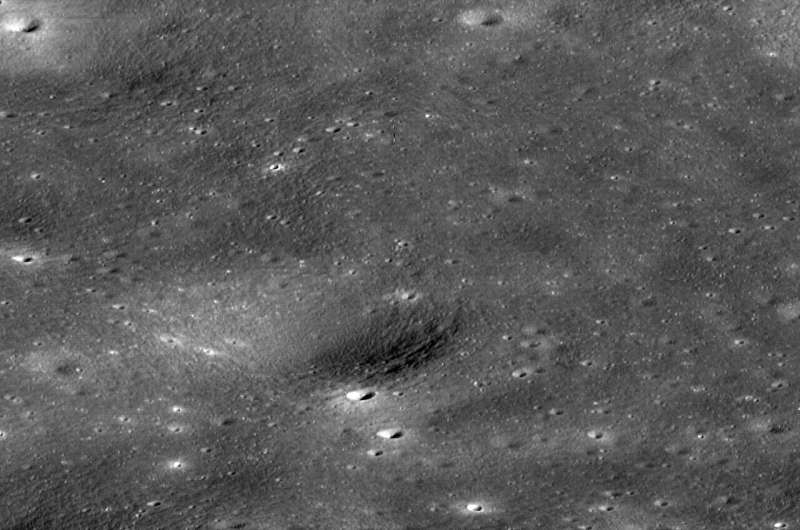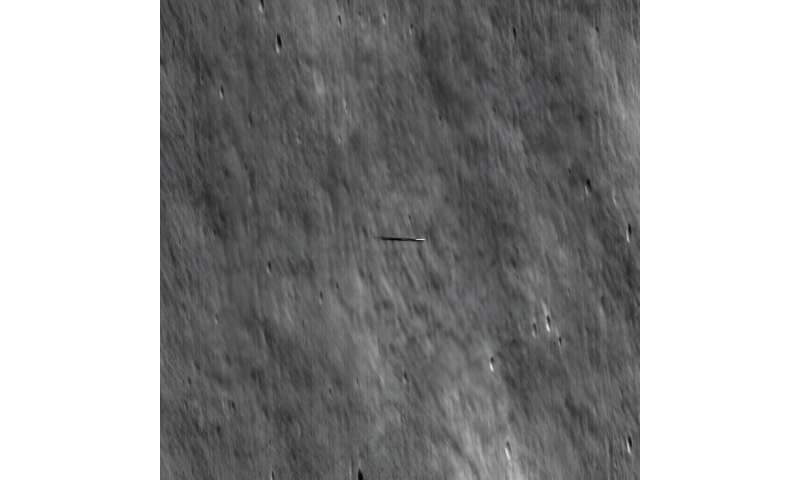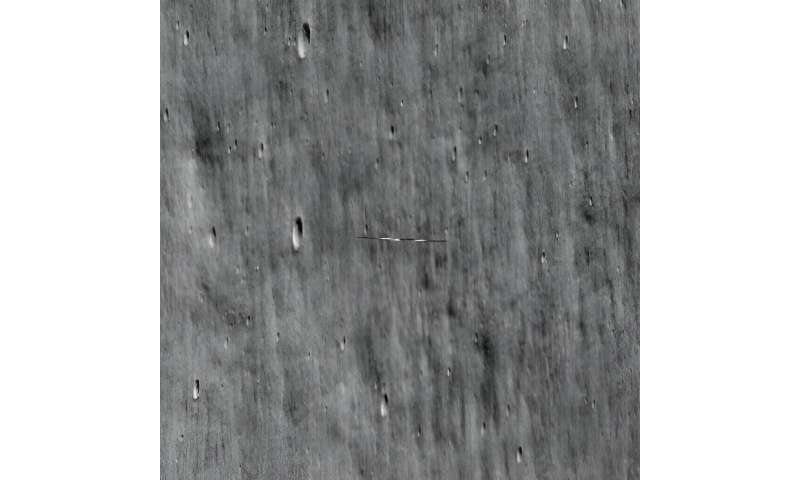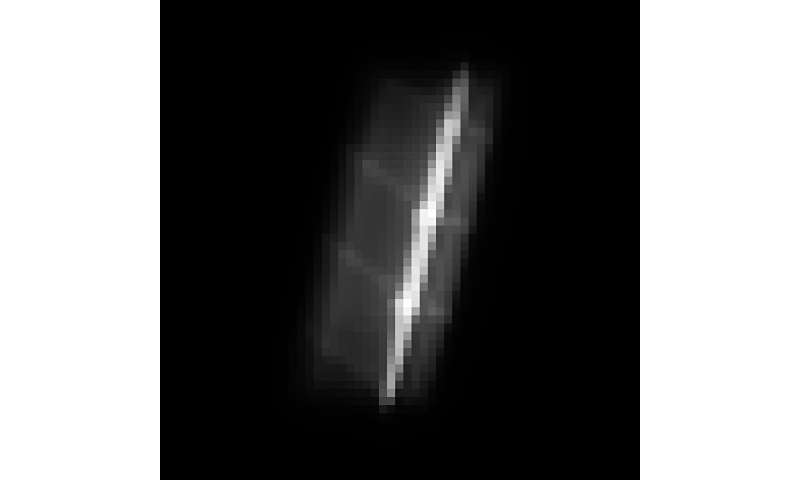This article has been reviewed according to Science X's editorial process and policies. Editors have highlighted the following attributes while ensuring the content's credibility:
fact-checked
trusted source
proofread
NASA's LRO finds photo op as it zips past South Korea's Danuri moon orbiter

NASA's LRO (Lunar Reconnaissance Orbiter), which has been circling and studying the moon for 15 years, captured several images of Korea Aerospace Research Institute's Danuri lunar orbiter last month. The two spacecraft, traveling in nearly parallel orbits, zipped past each other in opposite directions between March 5 and 6, 2024.
LRO's narrow angle camera (one in a suite of cameras known as "LROC") captured the images featured here during three orbits that happened to be close enough to Danuri's to grab snapshots.
Due to the fast relative velocities between the two spacecraft (about 7,200 miles, or 1,500 kilometers, per hour), the LRO operations team at NASA's Goddard Space Flight Center in Greenbelt, Maryland, needed exquisite timing in pointing LROC to the right place at the right time to catch a glimpse of Danuri, the Republic of Korea's first spacecraft at the moon.
Danuri has been in lunar orbit since December 2022. Although LRO's camera exposure time was very short, only 0.338 milliseconds, Danuri still appears smeared to 10 times its size in the opposite direction of travel because of the relative high travel velocities between the two spacecraft.
-

At the first imaging opportunity, LRO was oriented down 43 degrees from its typical position of looking down at the lunar surface to capture Danuri (streaked across the middle) from 3 miles, or 5 kilometers, above it. Credit: NASA/Goddard/Arizona State University -

During the next encounter, LRO was closer to Danuri, about 2.5 miles, or 4 kilometers, and oriented 25 degrees toward it. Credit: NASA/Goddard/Arizona State University -

Last spring, Danuri had an opportunity to photograph LRO. Its ShadowCam instrument, provided by NASA, snapped this photo of LRO as the Korean spacecraft passed about 11 miles (18 kilometers) above it on April 7, 2023. Based on the design of LRO’s narrow angle cameras, the ShadowCam was built to take high-resolution images of the moon’s permanently shadowed regions, where frozen water is likely trapped. The relative velocity between the two spacecraft was about 7,000 miles, or 11,000 kilometers, per hour. Credit: NASA/KARI/Arizona State University
Provided by NASA





















